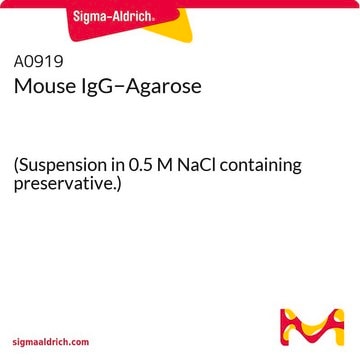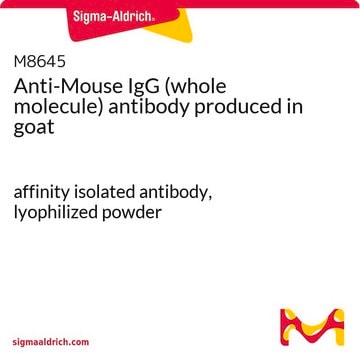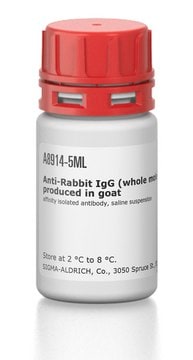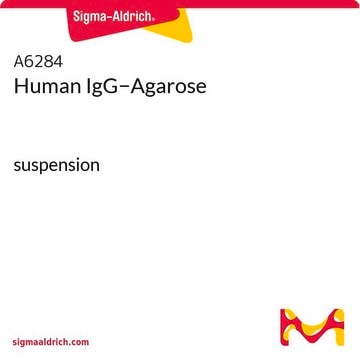A6531
Anti-Mouse IgG (whole molecule)−Agarose antibody produced in goat
affinity isolated antibody, suspension
About This Item
Recommended Products
biological source
goat
Quality Level
conjugate
agarose conjugate
antibody form
affinity isolated antibody
antibody product type
secondary antibodies
clone
polyclonal
form
suspension
species reactivity
mouse
extent of labeling
≥5 mg per mL
technique(s)
Ouchterlony double diffusion: suitable
immunoprecipitation (IP): suitable
matrix
Cross-linked 4% beaded agarose
matrix activation
cyanogen bromide
matrix spacer
1 atom
capacity
0.4 mg/mL, resin binding capacity (mouse IgG)
storage temp.
2-8°C
target post-translational modification
unmodified
Related Categories
General description
Immunogen
Application
Chromatin immunoprecipitation (1 paper)
Immunoprecipitation (1 paper)
Biochem/physiol Actions
Physical form
Disclaimer
Not finding the right product?
Try our Product Selector Tool.
Storage Class Code
10 - Combustible liquids
WGK
WGK 3
Certificates of Analysis (COA)
Search for Certificates of Analysis (COA) by entering the products Lot/Batch Number. Lot and Batch Numbers can be found on a product’s label following the words ‘Lot’ or ‘Batch’.
Already Own This Product?
Find documentation for the products that you have recently purchased in the Document Library.
Customers Also Viewed
Our team of scientists has experience in all areas of research including Life Science, Material Science, Chemical Synthesis, Chromatography, Analytical and many others.
Contact Technical Service











